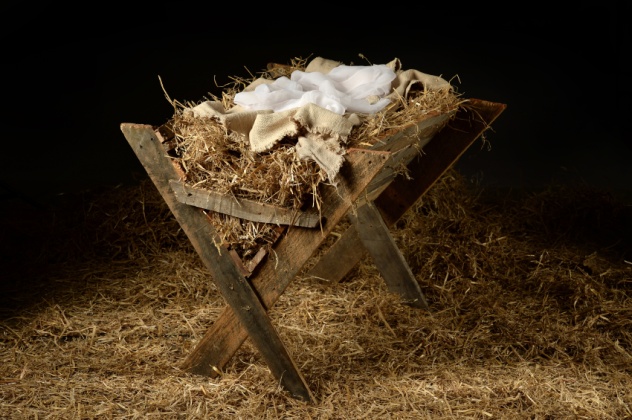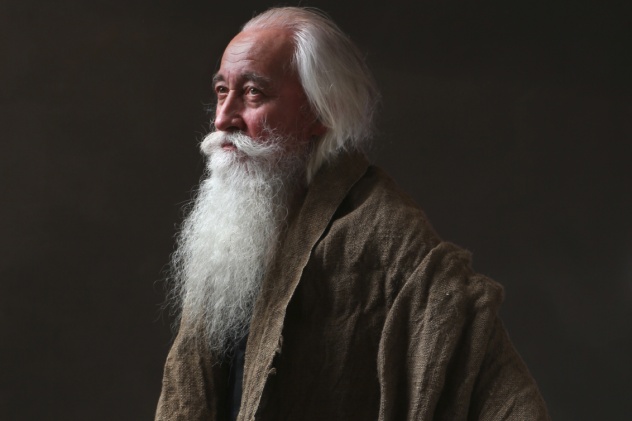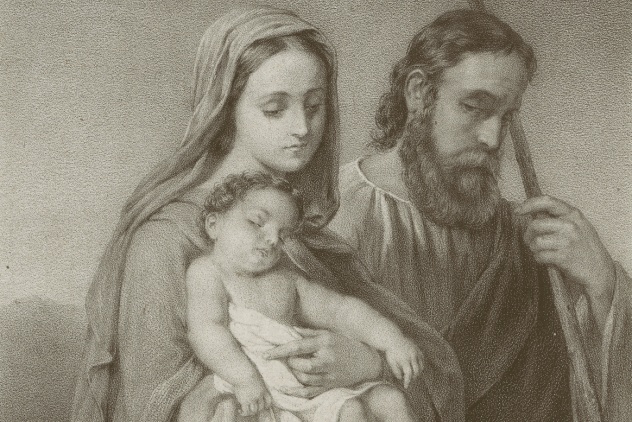10 It Didn’t Happen In December
Jesus probably wasn’t born on December 25. In fact, He probably wasn’t born in December at all. The Bible mentions shepherds keeping watch over their flocks in the fields. December in Israel would have been cold; the fields would have been unproductive, and the sheep were probably corralled. Shepherds usually kept their flocks in the fields during the spring lambing season. So how did Christmas come to be associated with December 25? The earliest recorded estimates dating the birth of Christ come from Clement of Alexandria (circa AD 200). He mentioned different groups who identified the date of Jesus’s birth as March 21, April 15, April 21, or May 20. The first mention of December 25 as Jesus’s birthday wasn’t until the mid–fourth century, when a Roman almanac listed December 25 as natus Christus in Betleem Judeae, or, “Christ was born in Bethlehem of Judea.” A popular theory about the origin of Christmas is that early Christians stole the date from a Roman Sun festival, which was held in late December. It’s suggested that this was a deliberate attempt to spread Christmas and Christianity throughout the Roman Empire. This theory has numerous problems, though, as early Christian writers such as Irenaeus and Tertullian make no mention of this, and Origen of Alexandria openly mocks Roman celebrations of birth anniversaries. It has been proposed that December 25, a time of pagan feasts, wasn’t deliberately chosen until the 12th century. While this theory popular on social media, scholars today recognize serious problems with it. The question remains: Why December 25? Tertullian recorded a calculation that date of Jesus’s birth was March 25. This was later celebrated as a feast commemorating Jesus’s conception, as opposed to His birth. Further, it was suggested that Jesus died on March 25, which led to the belief that He was conceived and crucified on the same day of the year. December 25 is obviously nine months after March 25, so it was taken as Jesus’s birthday. The truth is that December 25 came from celebrations in the early Church, not from pagan celebrations. Many scholars today believe that Jesus wasn’t even born in December.
9 There Wasn’t An Inn
We’ve all heard the story about there being “no room at the inn.” Indeed, this is what our English Bibles say. But in the original Greek (the language in which the New Testament was written), the word kataluma, translated as “inn,” doesn’t necessarily mean a motel. It’s only used a few times in the Bible, and elsewhere, it means “upper room” or “guest room.” The famous Last Supper took place in a kataluma. In fact, there’s a different Greek word for “inn” that does mean a motel or paid lodging, but it isn’t used, though the same gospel writer uses it in the story of the Good Samaritan a few chapters later. First-century homes often had a main room on the ground floor, where the family lived, and an “upper room” or “guest room,” where people who needed lodging could stay. It was a great shame in the Middle East to refuse hospitality to someone in need. There is a good chance that if there was no room in the “guest room,” it’s because it was already occupied. This changes the whole story we’ve come to celebrate. Rather than arriving in Bethlehem only to find the local motel with no vacancy, Mary and Joseph arrived in Bethlehem and sought lodging at a family member’s house. This would be a natural thing to do in Middle Eastern culture. Because people were returning to their ancestral homes for the census, other family members had already arrived and were occupying the guest room. So where did Mary and Joseph stay?
8 There Wasn’t A Stable
There’s no mention of a stable in the Bible’s stories of the first Christmas. A stable is assumed because we’re told that they “laid him in a manger.” (A manger is an animal’s feeding trough.) If there was a manger, it must have been in a stable (or perhaps a cave) where the animals stayed, right? Probably not. As previously mentioned, there’s a good chance that Mary and Joseph arrived in Bethlehem, Joseph’s hometown, and sought lodging at a family member’s house. The guest room was full, but it would have been a great shame to turn away someone in need, especially a relative with a pregnant wife. Many families had mangers inside their homes, where young animals would be safe and warm. Some of them were built into the floor of the of peasant homes or occupied a small room on the main floor. Since the guest room was full, Mary and Joseph were likely offered the manger, and it was there that the mother of Jesus gave birth. Rather than being turned away by a crusty old innkeeper and given lodging in a dirty barn, Mary and Joseph were probably in a relative’s home, surrounded by loved ones, when Jesus was born and laid in a manger.
7 Mary Didn’t Give Birth The Night She Arrived
In our Western reading of the Christmas story, we get the impression that Mary and Joseph made it to Bethlehem just in a nick of time and that Mary gave birth that very night. The truth is probably far less dramatic. The actual account of the first Christmas reads, “And it came to pass, that when they were there, her days were accomplished, that she should be delivered. And she brought forth her firstborn son.” The phrase “that her days were accomplished” is linked to “when they were there.” This implies that they had been there for a period of time before she gave birth. Just as Rome wasn’t built in a day, a Roman census wasn’t completed in a day. There would have had to have been time for all members of a family to travel the distance required for them to return to their ancestral homes to be counted. There would have been lines and waiting, not unlike our present-day elections. The reality is that Mary and Joseph were likely in Bethlehem for an extended period of time, both before and after she gave birth.
6 The Wise Men Didn’t Arrive The Night Jesus Was Born
The three wise men are a staple in almost every Nativity scene, each carrying a gift for the newborn king. Standing beside the shepherds, Mary, Joseph, and baby Jesus, they complete the story of the first Christmas. Or do they? The Biblical account says, “And entering into the house, they found the child with Mary his mother.” Notice two things about this statement: First, the wise men found the family in a house, not a stable. Quite possibly, they were still living with their family in Bethlehem at the time or in a house that they had since rented. Second, they found a “child.” The Greek word used is paidion, which means “toddler,” not brephos, or “baby,” as in Luke 2:16. It’s also worth noting that after the wise men deceived King Herod by returning a different way, he had all of the children in the vicinity who were two years old and younger slaughtered. These facts point to Jesus being a toddler and the wise men having visited him one or two years after his birth.
5 The Shepherds Didn’t Follow The Star
Many think of the shepherds as old men cradling lambs and standing in a stable with the star shining above, having just heard the angels sing. Many believe that the shepherds followed the star to find the baby in a manger. This is but another traditional myth that has come to be associated with the first Christmas. The misconception developed by the blending of two separate stories (the shepherds and the wise men) which occurred at different times. There probably wasn’t a star hanging over Bethlehem the night Jesus was born, as it didn’t lead the wise men there for two years. The shepherds were said to have been directed by the angel to find the child by following two signs: “You shall find the infant wrapped in swaddling clothes, and laid in a manger.” Using these two clues, the shepherds went in search of the newborn king. How would the shepherds found a newborn baby in a town the size of Bethlehem? The answer is surprisingly simple. Much like today, births in the first century were a big deal. If Mary gave birth in the home of one of Joseph’s relatives, surrounded by family, the house would have been filled with much rejoicing. The shepherds were no doubt guided by the infant’s cries and happy sounds of celebration.
4 There Weren’t Three Wise Men
We’ve come to know them as Gaspar, Melchior, and Balthasar, the three wise men from the East who supposedly traveled by camel following the star. But were there really only three of them? In truth, these three names weren’t added to the story until the seventh century in the earliest Latin records. Three gifts are mentioned in the Christmas story: gold, frankincense, and myrrh. Nowhere is the number of wise men recorded. It’s assumed that each wise man brought a gift, and thus, there must have been three wise men. In reality, there may have been more who came to worship the baby. Early Christian art is inconsistent as to the number of wise men. A painting in the cemetery of Saints Peter and Marcellinus displays two wise men, while one in the cemetery of Domitilla shows four. A vase in the Kircher Museum has eight wise men, and Asian tradition says there were twelve. The truth is that the number of wise men who visited the infant king simply isn’t known, and there is no compelling reason, aside from the number of gifts, to believe that there were three.
3 The Wise Men Weren’t Kings
“We three kings of orient” is sung each Christmas to celebrate the journey of the wise men. Were they really kings? The Greek word used in Matthew 2:1 is magos. The word is primarily used to denote a member of a group of priests or wise men among the Medes, Persians, and Babylonians. They were educated men, whose study included astronomy, astrology, and enchantment. It is sometimes translated as “wise man,” sometimes as “magician.” The Greek translation of the Old Testament uses the same word in the book of Daniel, where it describes that Daniel was made the “chief of the magicians.” This fits well with the Christmas story, where we’re told that the wise men “saw his star in the east” and came to worship the baby. Magoi studied the stars and saw meaning in the celestial object that dominated the night sky at that time. Rather than being kings, it seems more likely that the wise men were educated astronomers from the East.
2 Mary And Joseph Were Married When Jesus Was Born
Part of the scandal surrounding the birth of Jesus was undoubtedly the claim of Mary’s immaculate conception. It was this that even led Joseph to initially decide to quietly divorce her, rather than have her stoned to death for adultery as the law said. Here was an unwed mother, pregnant in a first-century religious community. However, it’s not quite as cut and dry as that. Joseph and Mary were “betrothed,” or engaged, when they find out that Mary was pregnant. It’s likely that they had signed a Jewish engagement contract called a ketubbah. This was much more legally binding than our modern engagements and could only be broken by a divorce. Furthermore, after seeing a vision of an angel in a dream, Joseph got up “and took unto him his wife.” So, in view of the average Jewish person in the first century, they were technically married, although they hadn’t consummated their marriage.
1 The Christmas Star May Have Been A Planetary Conjunction
There are a number of fascinating features about the star that guided the wise men. It is said to have risen “in the east,” to have “appeared” at a specific time, to have gone “before them,” and to have “stopped” over Bethlehem. Taken together, these characteristics cannot possibly describe a star, but they do describe planets, known as “wandering stars” to the ancients. They rise in the eastern sky, travel through the fixed field of stars, and are governed by the planetary laws of motion, which make them appear at certain times and not others. Moreover, they can even appear to stop when they enter their retrograde motion phase. There is evidence that Herod the Great died in 1 BC, not 4 BC as previously thought. During the fall of 2 BC, an amazing planetary conjunction between Jupiter and the star Regulus would have resulted in one of the brightest objects that people at that time had ever seen. It’s interesting to note that Jupiter is named after the greatest god of Roman mythology, and Regulus means “regal” or “kingly.” This symbolism would not have been lost on the magi (aka astronomers) who decided to follow it. By running computer simulations, we can discover the exact day that Jupiter went into its retrograde motion and appeared to stop. That day was December 25, 2 BC. To the wise men gazing at Jupiter from Jerusalem, it would have appeared to be over the little town of Bethlehem. So, December 25 may not have been the day Jesus was born, but rather the day that the wise men came to give him gifts.
























